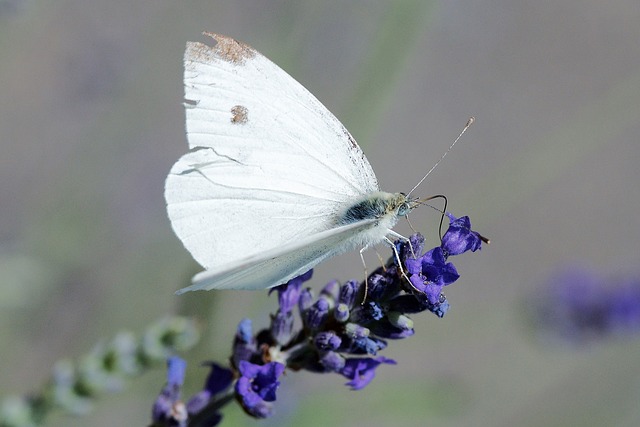Cabbage Butterfly Tips

The Cabbage Butterfly is white with distinct black spots on the wings and measures around 40mm across. There is also a Cabbage moth that is greyish and small and around 10mm across.
The moths and butterflies lay their eggs on the underside of leaves. The larvae of caterpillars hatch from the eggs and then feed on the leaves or fruit, so it’s the caterpillars that do the damage.
The blue-green smooth textured caterpillar is that of the cabbage white butterfly, while the caterpillar which is green-brown is that of the cabbage moth. Their appetite is voracious and they can decimate your plants very quickly.
The most successful method is to use a fine netting to form a physical barrier, stopping the moths from reaching your plants. Ensure the nets fully enclose each plant, leaving enough of a gap to prevent all contact. For plants that need the bees for pollination, you will need to take the netting off in the day time , when they are in flower.
Companion planting can provide a range of solutions. Nasturtiums, dill, and mustard will draw the moths away from your main crops. Upland cress is lethal to caterpillar larva and the cabbage moth is drawn to laying eggs on it. Strong-smelling herbs such as lavender, sage, and rosemary seem to deter cabbage moths from settling and laying eggs.
Another useful technique is to attract predator wasps and other insects to your garden by growing plenty of blooming herbs and flowers. Predatory insects will eat the the young caterpillar larva eggs.
Cabbage moths are highly territorial and will avoid laying eggs where there’s already competition. You can buy white plastic moth-shaped decoys or make your own from ice cream tubs. To butterfly eyes, the plastic fluttering in the breeze is a convincing impression of a rival.
There are plenty of commercial insecticide sprays for controlling caterpillars, some organic and eco-friendly, others less so. Many are based on a natural pesticide called pyrethrum, which works against caterpillars, aphids, and many other pests. Unfortunately, these can also cause problems for beneficial insects, including ladybirds.
A much safer and organic approach is to use ‘Dipel’. This spray is based on a bacterium called Bacillus thuringiensis. This spray is highly selective, only affecting leaf-eating caterpillars among insects, it is harmless for birds and other wildlife and the sprays are safe for use on food crops, with no withholding period.






